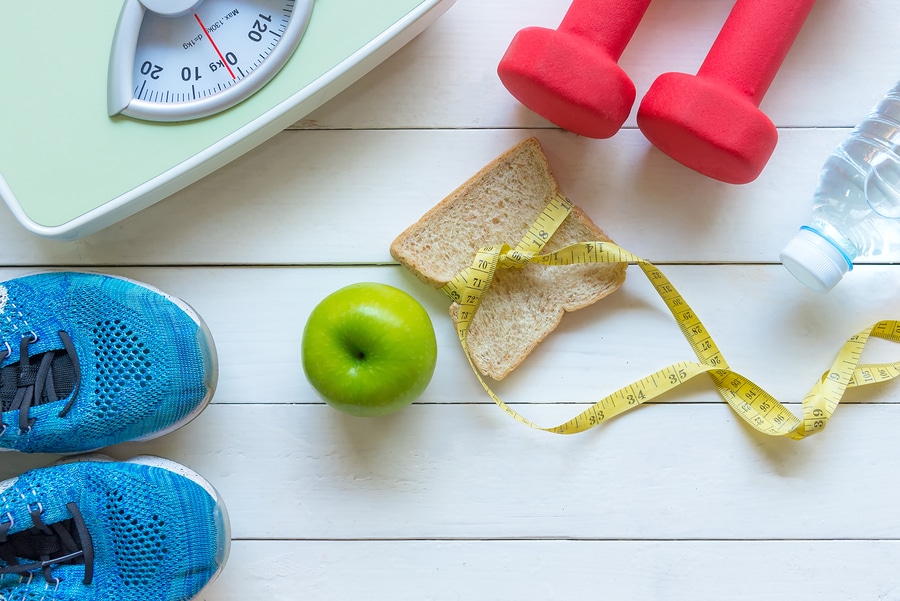Checklists keep you on track during your weight-loss journey and tell you at a glance whether you’re making progress. Due to our busy lifestyles, we hardly think about what we’re eating daily, and the result is a problem of creeping obesity. Experts urge keeping a weight-loss checklist to guide you to shed extra pounds progressively.
Some of the most helpful things to have in your weight-loss checklist include:
Nutritional Plans
Sugar is one of the biggest causes of weight gain. Make sure to consider this when making your weight-loss checklist so that you consciously think about what you’re eating.
- Focus on fruits, veggies, lean protein, and whole grains.
- Replace all sugary drinks with water or lemon water.
- Avoid alcohol. It’s full of empty calories and promotes weight gain.
- Avoid processed foods; they’re high in sugar.
Set Clear Targets
Setting weight-loss targets and milestones target is vital. Create a calendar and set clear, defined milestones against future dates.
These targets and goals must be SMART to ensure that your chances of success are high. Some valuable targets might include:
- Work up to 30 minutes of continuous aerobic exercise daily.
- Lose 10 to 20 pounds per month.
- Increase fruit and vegetable intake.
- Weigh yourself daily and record the weight loss.
- Wear a pedometer to track distances covered walking or running.
- Establish body-measurement and body-fat targets.
- Monitor how many dress sizes you’ve dropped over a set period.
- Record progressive exercise times and intensity in a journal.
Hitting a set target is a significant achievement, which boosts confidence and makes you want to go the whole journey.
Know Your Reasons
Write down your reasons for weight loss to give you motivation, and to always remind you about why you started.
- Are you doing it to be more active with your kids?
- Do you want to be a couple of dress sizes smaller?
- Will weight loss improve your confidence and body image?
- Are you doing it to improve your health or are to trying to conceive?
- Make sure to recruit a supportive accountability partner
Going through this list will help you overcome depression on those hard days.
Integrate Technology
Various smartphone apps give insights on weight loss and diet plans. They provide a breakdown of what you should eat and the amount of weight you might lose from eating certain foods.
- Wear smartwatches and pedometers while walking or running to track daily progress.
- Use these apps to track your regular food and calorie intake.
- Subscribe to online support groups and forums.
Incorporate these apps into your weight loss journey to keep you on track.
Plan When and How to Eat
Creating a timetable that specifies when to eat is an essential detail during weight loss.
- Meal prep so you know you’ll always eat healthily.
- Make plans to eat breakfast no later than 10 a.m., lunch between 11 a.m. and 2 p.m., and dinner no later than 7 p.m.
- Cube veggies and fruit, and pack assorted nuts into single servings. Keep these at the front of the fridge for accessible snacks.
- Do not eat if you’re not hungry.
- Serve your meals on smaller plates – you’ll likely eat less.
- Never eat snacks out of a bag – apportion single servings in bowls.
- If tempted to eat out of boredom, drink water, take a walk, or phone a friend.
Eating at the right times allows your body to burn calories efficiently. Eat slowly, putting down your fork in between mouthfuls, and make sure to chew every bite. This action allows your brain time to send signals to your digestive system when you’re full.
Get Started on Your Weight Loss Checklist
Developing a weight-loss checklist is a crucial step towards weight loss. However, following and keeping to the plan is the most critical feature of weight-loss success. Let Mediplan Diet help you create your personalized weight loss plan. Contact us today!

